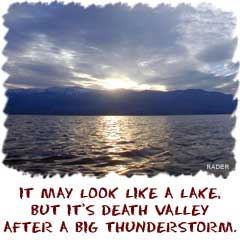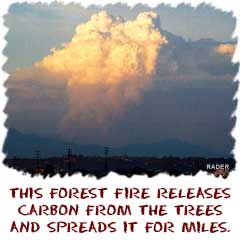 As you have learned about the biosphere,biomes, and specific ecosystems, we have been mentioning the cycles all around you. Whether you look at the food chain or the growth and reduction of populations, ecosystems are always shifting and changing. Forests have spring when plants bloom, autumn when they lose leaves, and winters in the snow. The cycle begins again the next spring.
As you have learned about the biosphere,biomes, and specific ecosystems, we have been mentioning the cycles all around you. Whether you look at the food chain or the growth and reduction of populations, ecosystems are always shifting and changing. Forests have spring when plants bloom, autumn when they lose leaves, and winters in the snow. The cycle begins again the next spring. There are also cycles for the components and the pieces that keep everything alive. There are cycling and flowing nutrients, molecules, and energy. For example, we have mentioned the water cycle several times. Water evaporates, condenses in clouds, falls as rain, and often returns to the oceans. Biogeochemical cycles cover all of the cycles on Earth that relate to biological, geological, and chemical factors.
Bio-Geo-Chemical
Wow. Talk about a word that describes everything on Earth. The world’s cycles all fall under the big grouping of biogeochemical cycles. Let's break it down.BIO: Biology. Life. Living things. The biological elements of these cycles play a role in the lives of organisms. The cycles might limit the organisms of Earth or they might happen alongside, changing the environment. For example, when oxygen (O) is found in you or in a plant, it is in the biological phase of its cycle. When a substance is in this portion of a cycle, it is in a biotic phase.
GEO: Earth. Rocks. Land. Air. The 'geo' portions of the cycles refer to the non-living or abiotic phases. For example, oxygen cycles through many systems. When oxygen winds up in rocks as iron oxide (FeO) or a crystal, it is in the 'geo' part of its cycle.
 CHEMICAL: Molecules. Reactions. Atoms. These are the chemical factors involved in the cycles. Complete molecules are not always passed from one point to the next. Chemical reactions change the molecules by building and breaking chemical bonds. These chemical interactions may be small, but they are very important.
CHEMICAL: Molecules. Reactions. Atoms. These are the chemical factors involved in the cycles. Complete molecules are not always passed from one point to the next. Chemical reactions change the molecules by building and breaking chemical bonds. These chemical interactions may be small, but they are very important. Oxygen, for example, is included in alloxidation reactions. One minute oxygen might be in the air and then it is involved in rusting an iron pipe. Carbon (C) offers another important example of chemical factors involved in a cycle. Carbon dioxide (CO2) is found in the atmosphere. It is ‘fixed’ into sugar molecules when plants go through photosynthesis. It moves from an inorganic form to an organic and biologically useful form.
Most of the cycles we discuss will involve the recycling of molecules and nutrients that can be used in systems over and over again. You need to remember that all cycles involve biological, geological, and chemical elements.







0 comments:
Post a Comment